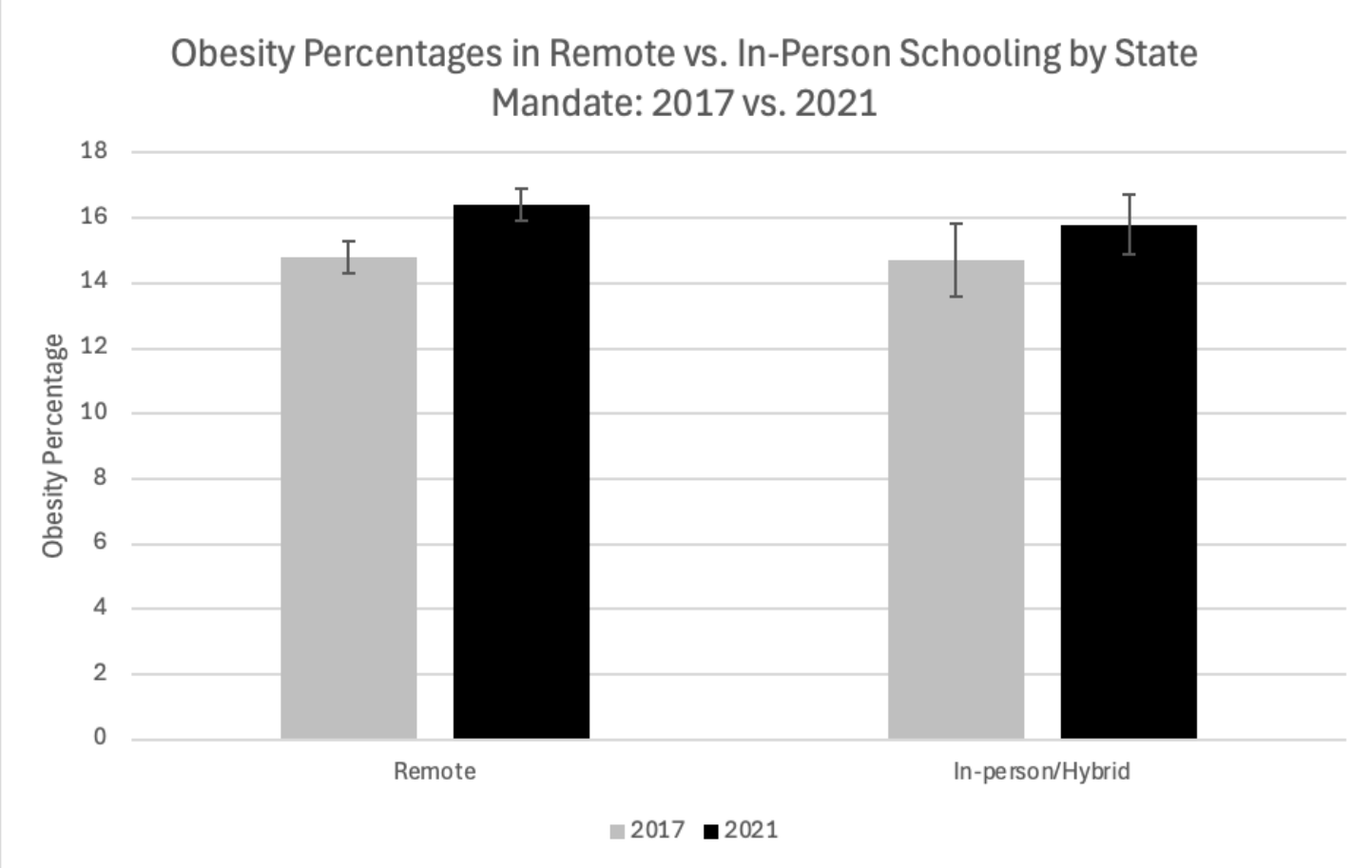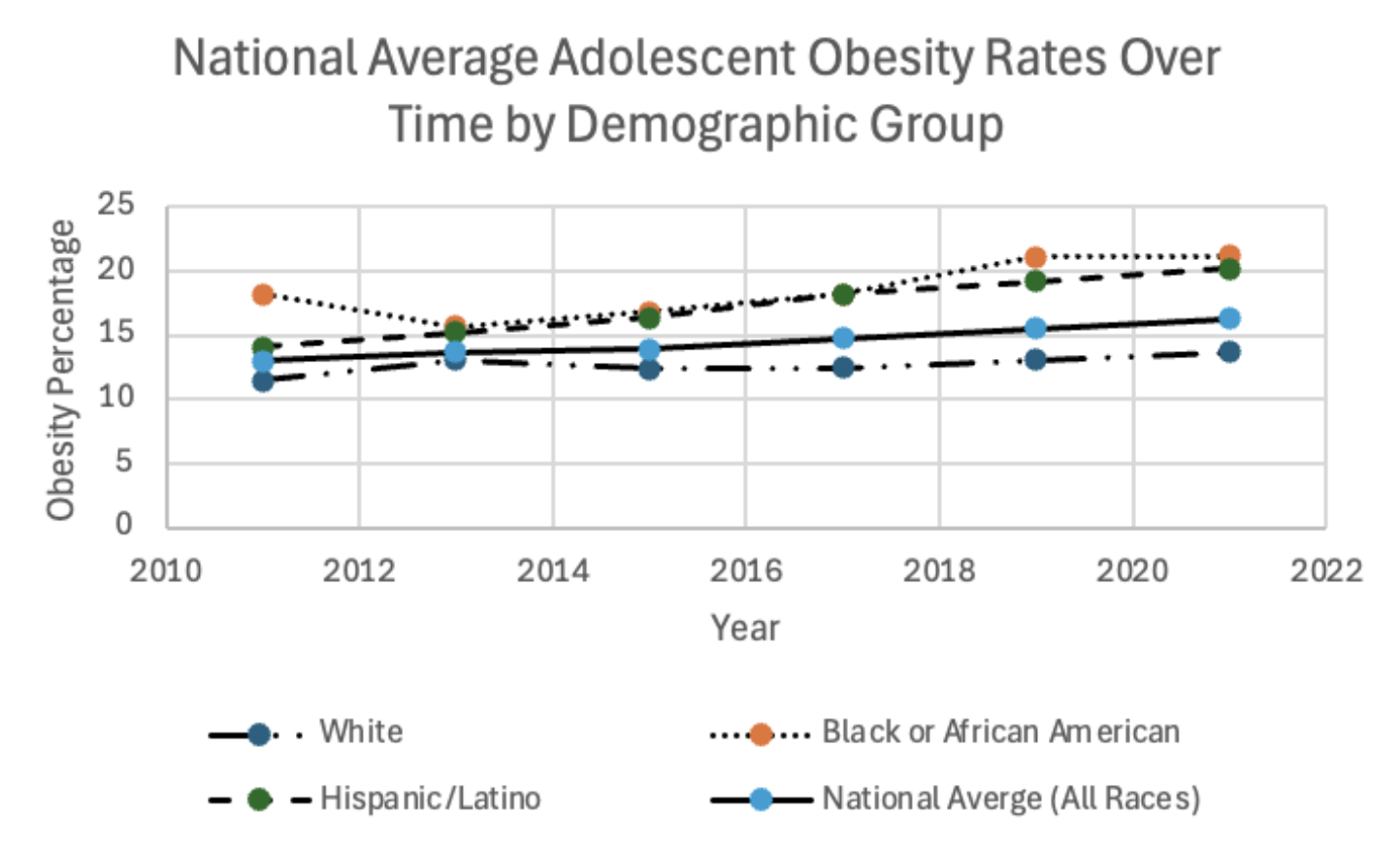Obesity 2
Session: Obesity 2
283 - Child Obesity Trends in the US including COVID Impact
Sunday, April 27, 2025
8:30am - 10:45am HST
Publication Number: 283.4484
Sabrina Salman, University of Connecticut School of Medicine, Lexington, MA, United States; Saachi D. Shah, University of Connecticut, Glastonbury, CT, United States; Sharon Smith, UConn/CT Childrens, Hartford, CT, United States

Sabrina Salman (she/her/hers)
Student
University of Connecticut School of Medicine
Lexington, Massachusetts, United States
Presenting Author(s)
Background: Obesity is a growing epidemic in the US especially for underrepresented racial groups such as Black and Hispanic/Latino children/adolescence. The COVID-19 pandemic disproportionately affected educational settings and minority groups. Impacts on childhood obesity related to the pandemic have not been fully explored.
Objective: To evaluate obesity rates before and during the COVID -19 pandemic and associations with race and ethnicity.
Design/Methods: Data was collected from Centers for Disease Control (CDC) growth charts and CRPE (Center on Reinventing Public Education) school closure data. CDC growth charts range from 2011-2021. Inclusion criteria were 9th-12th graders defined as obese (greater than or equal to 95th percentile for BMI by percentages). CRPE consensus data was collected from all 50 states with a pool of over 100 school districts showing statuses of remote versus in-person or hybrid requirements for 2017-2021. Data was statistically analyzed and visualized using R studio and Microsoft Excel to measure (1) rates of obesity from 2011-2021 in different populations (2) obesity rates from 2017-2021 for male vs female based on race/ethnicity, and (3) differences in obesity rates in remote vs in-person/hybrid learning state mandates between 2017-2021. Statistical significance parameters set at p< 0.05 following two-tailed T-tests and ANOVA.
Results: 14,000 adolescents met inclusion criteria with ~50% females, ~50% males, 13% Black, 50% White, 17% Hispanic. Education setting 2020-2021: 38% in-person/hybrid and 62% remote. The rates of obesity from 2011-2021 increased in all demographic groups. The overall proportion of children nationally with obesity showed a 10.14% increase with similar increases in White children but significantly greater increases in Black (16.48%, p=0.0003) and Hispanic children (11%, p= 0.0007). Before compared to after COVID, the national increase in female obesity rate was 13% but was significantly higher for Black (35%) and Hispanic (24%) girls (p < 0.01). Obesity rate changes between 2017 and 2021 was significantly increased for remote learning (10.3%) compared to in person (7.2%, p< 0.05).
Conclusion(s): Overall obesity rates increased over time with the greatest increases in Black and Hispanic females. The pandemic changes on educational setting appear to have impacted obesity rates with significant increases seen in those with remote learning compared to in person. Ongoing efforts to address obesity in these populations are needed.
Pre and Post Pandemic Obesity Rate Changes per Demographic Group
.png) Table 1. Male and Female adolescent obesity rates in 2017 (pre-pandemic) vs 2021 (post-pandemic) per demographic group in Black or African American, Hispanic, White, and All Races (national average) with following P-values showing statistical significance in all groups except BOAA males and White females
Table 1. Male and Female adolescent obesity rates in 2017 (pre-pandemic) vs 2021 (post-pandemic) per demographic group in Black or African American, Hispanic, White, and All Races (national average) with following P-values showing statistical significance in all groups except BOAA males and White femalesObesity Percentages in Remote vs In-person/Hybrid Schooling by State Mandate: 2017-2021
 Figure 1. Obesity percentages out of national population for states under remote learning requirements vs those in in-person/hybrid requirements during the pandemic in between 2017 and 2021.
Figure 1. Obesity percentages out of national population for states under remote learning requirements vs those in in-person/hybrid requirements during the pandemic in between 2017 and 2021. National Average Adolescent Obesity Rates Over Time by Demographic Group
 Figure 2. National averages per demographic groups and national average from 2011-2021, with Hispanic and BOAA populations surpassing the national average with an increased rate of 1.09 increase in obesity per year in BOAA and 1.21 increase in Hispanic compared to the national average rate of 0.65 and White populations with an increase rate of 0.32 obesity increase per year.
Figure 2. National averages per demographic groups and national average from 2011-2021, with Hispanic and BOAA populations surpassing the national average with an increased rate of 1.09 increase in obesity per year in BOAA and 1.21 increase in Hispanic compared to the national average rate of 0.65 and White populations with an increase rate of 0.32 obesity increase per year. 
